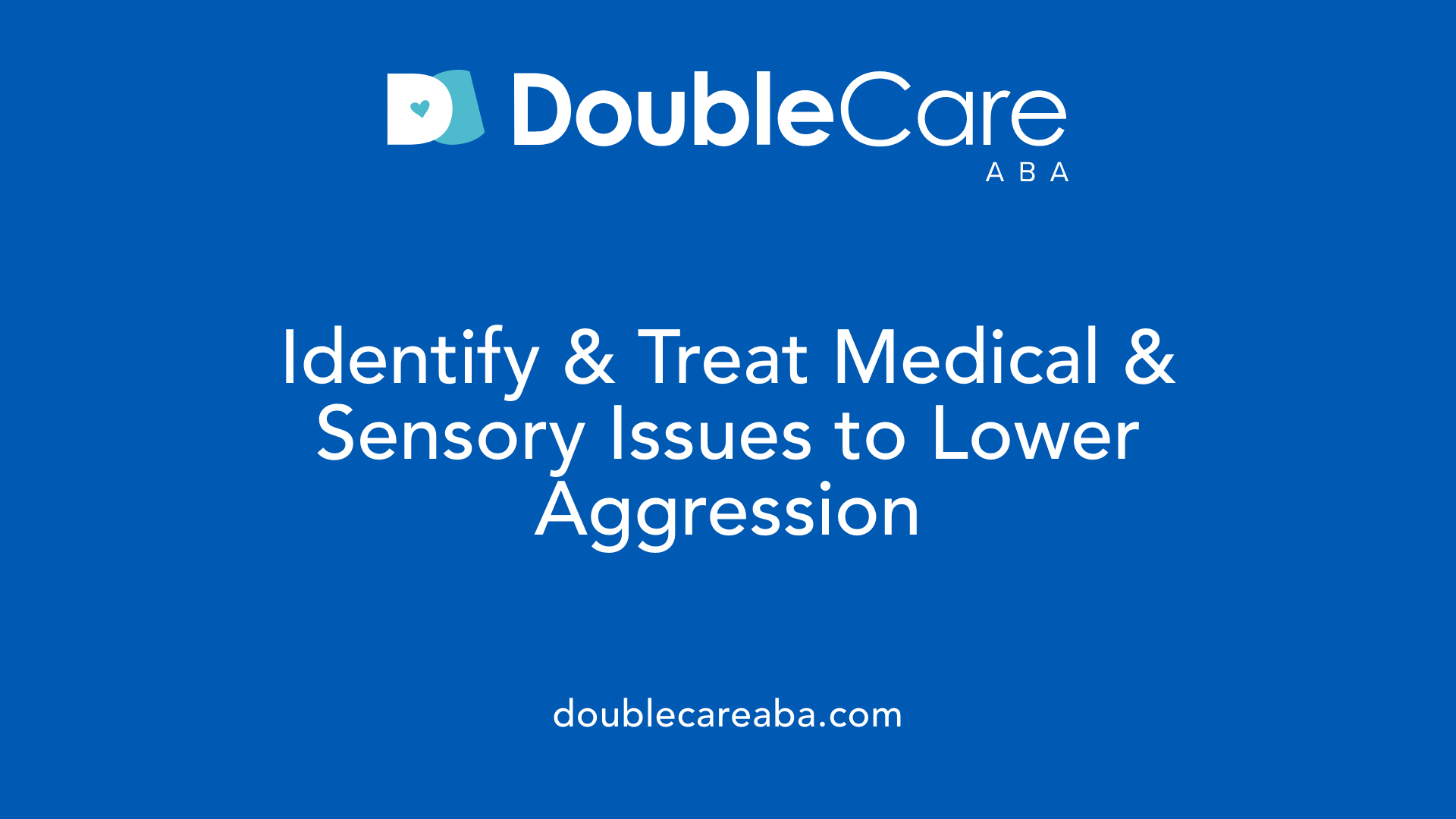Understanding Aggression in Autism Spectrum Disorder
Aggression is one of the most common challenges faced by parents and caregivers of children with autism spectrum disorder (ASD). Understanding the roots of aggressive behaviors and implementing targeted interventions can significantly improve outcomes for these children and their families. This article explores evidence-based strategies, combining behavioral approaches and pharmacological treatments, to address aggression effectively in children with autism.
Identifying and Characterizing Aggressive Behaviors in ASD
How can aggression in children with autism be identified and characterized?
Aggression in children with autism spectrum disorder (ASD) encompasses various behaviors that can be broadly classified into two types: reactive and proactive aggression.
- Reactive aggression is impulsive and defensive, often a response to emotional overload, sensory stimulation, or environmental stressors.
- Proactive aggression is deliberate and instrumental, aimed at achieving specific outcomes rather than driven by anger.
Recognizing these distinctions is essential for tailoring effective interventions.
Detailed documentation plays a crucial role in understanding aggression. Caregivers and professionals should record specifics such as:
- The type of aggressive behavior exhibited (e.g., hitting, biting).
- The timing when aggression occurs (specific times of day, during transitions).
- The settings or contexts in which aggression arises (home, school, social situations).
Identifying common triggers also aids in comprehension and prevention strategies. These triggers may include:
- Disruptions to routine or unexpected changes.
- Lack of sleep or fatigue.
- Sensory overload from environmental stimuli.
- Underlying mental health or medical issues like pain or gastrointestinal discomfort.
This comprehensive identification and characterization ensure that subsequent interventions are precisely targeted to the individual needs of each child with ASD, facilitating better outcomes in managing aggressive behaviors.
Understanding the Functions of Aggression Through Functional Behavioral Assessment

What is the role of Functional Behavioral Assessment in managing aggression?
Functional Behavioral Assessment (FBA) is a structured process designed to identify the reasons behind aggressive behaviors, particularly in children with autism spectrum disorder (ASD). It focuses on uncovering the purpose the aggression serves for the individual, such as obtaining social attention, gaining access to preferred items, or escaping from undesirable demands.
Purpose of Functional Behavioral Assessment (FBA)
FBA involves systematically gathering information about the aggressive behavior through observations and data collection. This assessment characterizes the type, timing, and setting of the behavior, allowing caregivers and professionals to understand what triggers aggression and what consequences might be reinforcing it.
Common functions of aggressive behavior
Aggressive acts often fulfill specific needs, including:
- Social attention: The child may use aggression to gain interaction or acknowledgement.
- Access to preferred items or activities: Aggression may help the child obtain desired objects or avoid unwanted tasks.
- Escape or avoidance: The behavior might serve to remove the child from stressful or uncomfortable situations.
Using FBA data to guide interventions
Once the function of the aggression is identified, targeted interventions can be designed. For example, if aggression is linked to escaping demands, strategies can focus on teaching appropriate communication skills or modifying the environment to reduce stress. Applied Behavior Analysis (ABA) techniques often utilize FBA data to develop individualized plans, incorporating methods like reinforcement of alternative behaviors and functional communication training.
By precisely understanding why aggression occurs, FBA enables caregivers and therapists to implement effective and tailored behavioral strategies that address the root causes, improving outcomes for children with ASD.
Applied Behavior Analysis and Behavioral Interventions to Reduce Aggression
Overview of ABA strategies
Applied Behavior Analysis (ABA) is a widely supported approach to reducing aggressive behavior in children with autism spectrum disorder (ASD). It focuses on understanding the purpose behind behaviors and uses targeted interventions to teach alternative, more functional behaviors.
Reinforcement techniques: DRO, DRA, NCR
Reinforcement strategies play a central role in ABA. Differential Reinforcement of Other behavior (DRO) involves reinforcing the child when the aggressive behavior does not occur during a specified time. Differential Reinforcement of Alternative behavior (DRA) reinforces a different, appropriate behavior that serves the same function as the aggression. Noncontingent Reinforcement (NCR) provides access to positive reinforcement on a fixed schedule regardless of behavior, helping reduce the motivation for aggression.
Antecedent-based and extinction strategies
Antecedent-based interventions are proactive, aiming to modify the environment or triggers before aggression occurs. Extinction therapy involves no longer reinforcing the aggressive behavior, which can decrease its frequency over time. Techniques such as discrete trial training and pivotal response training are also part of ABA methods used to structure learning and reduce aggression.
Role of functional communication training (FCT)
Functional Communication Training (FCT) is an evidence-based behavioral intervention that teaches children to communicate their needs effectively instead of using aggression to gain attention or escape demands. FCT helps children develop appropriate requests and other communication skills, which significantly lowers aggressive episodes.
What behavioral methods are effective for reducing aggression in children with autism?
Behavioral methods such as ABA—incorporating DRO, DRA, NCR, antecedent-based interventions, extinction therapy, and FCT—are shown to effectively reduce aggression. These strategies focus on identifying triggers, reinforcing positive behaviors, and teaching appropriate communication skills, addressing both the cause and function of aggression in ASD.
Enhancing Communication to Prevent Aggressive Outbursts

Communication Challenges and Frustration
Children with autism spectrum disorder (ASD) often face communication difficulties that lead to frustration and anger. These emotional responses can escalate into aggressive behaviors when the child is unable to express their needs or feelings effectively. Understanding this link is crucial for managing and reducing aggression.
Teaching Functional Communication with FCT
Functional Communication Training (FCT) is an evidence-based intervention that teaches children with ASD to communicate their wants and needs appropriately. By replacing aggressive behaviors used to gain attention or escape demands, FCT equips children with more effective and positive ways to interact, leading to a significant reduction in aggressive outbursts.
Using Visual Supports and Clear Communication
Clear, precise communication is essential for reducing frustration in autistic children. Visual supports—such as schedules, symbols, and cues—help make expectations predictable and easier to understand. This structure reduces anxiety and the likelihood of angry reactions that can precede aggression.
Helping Children Understand Emotions with Visual Tools
Concrete tools designed to help children identify and manage their emotions are valuable in preventing aggression. Resources like stress scales, traffic light systems, and visual thermometers provide a tangible way for children to recognize their feelings and self-regulate. This emotional awareness empowers children to manage discomfort without resorting to aggression.
How Does Improving Communication Affect Aggression in Children with ASD?
Improvement in communication directly decreases frustration and aggressive behavior. When children can express their needs through FCT rather than aggression, and when visual supports clarify expectations, anger and outbursts become less frequent. Likewise, helping children understand their emotions with visual tools fosters self-control, further reducing aggressive incidents.
Creating Structured and Predictable Environments to Reduce Anxiety and Aggression

Importance of routines and visual schedules
Children with autism often face challenges with change and unpredictability, which can heighten anxiety and trigger aggressive behaviors. Establishing consistent routines helps create a sense of security. Visual schedules act as clear, concrete guides that outline daily activities, setting clear expectations and reducing uncertainty.
Calming environments to prevent triggers
A calming and predictable environment minimizes exposure to potential triggers such as sensory overload or unexpected interruptions. Soothing colors, minimal noise, and organized spaces contribute to a tranquil setting that helps prevent frustration and aggressive outbursts.
Safe spaces and time-outs for self-regulation
Providing designated safe spaces allows children to withdraw and calm themselves when overwhelmed. Time-outs, when used sensitively, serve as opportunities for the child to regain emotional balance outside of stressful situations, reducing the chances of aggression.
Using energetic activities to diffuse anger
Physical outlets like bouncing on a trampoline, running, or other movement-based activities enable children to release pent-up energy and anxiety. These activities can help dissipate frustration and calm the nervous system, lowering the likelihood of aggressive reactions.
What environmental approaches help prevent aggression in children with autism?
Structured and predictable environments help reduce anxiety that may lead to aggression. Use of visual schedules and consistent routines provides clear expectations. Creating calming spaces and offering time-outs allow children to self-regulate when overwhelmed. Engaging in activities that release pent-up energy, such as bouncing or running, can also diffuse anger and anxiety.
Addressing Medical and Sensory Triggers of Aggression

How do medical and sensory issues contribute to aggression in autism?
Medical and sensory challenges play a significant role in provoking aggressive behaviors in children with autism spectrum disorder (ASD). Conditions such as sleep disturbances, gastrointestinal discomfort, and unmanaged pain often lead to heightened irritability and frustration, which can manifest as aggression.
Common medical conditions influencing behavior
Poor sleep quality is frequently reported among children with ASD and can exacerbate difficulty in emotional regulation. Gastrointestinal problems, including chronic constipation or reflux, cause physical discomfort that children might not be able to communicate, leading to increased agitation. Additionally, untreated pain from any source can directly trigger outbursts or defensive aggression.
Sensory sensitivities and overload
Many autistic children experience heightened sensory sensitivities, making them more vulnerable to overload from environmental stimuli such as loud noises, bright lights, or certain textures. This sensory overload can contribute to feelings of distress and anger, sometimes resulting in behaviors that appear aggressive but are responses to overwhelming input.
Identifying and treating sleep disturbances, pain, gastrointestinal issues
Routine screening for sleep problems, pain sources, and gastrointestinal symptoms is crucial for managing aggression. Interventions might include improving sleep hygiene, addressing digestive issues with medical treatment, and pain management strategies. By resolving these underlying health problems, caregivers and clinicians can often see a notable reduction in aggression, improving overall quality of life for the child.
Addressing medical and sensory contributors to aggression should always be part of a comprehensive approach, combining behavioral interventions and medical evaluation to provide calm, comfortable environments for autistic children.
Pharmacological Treatments: FDA-Approved Medications
Use of Risperidone and Aripiprazole
Risperidone and aripiprazole are the primary medications approved by the FDA for managing aggression and irritability in children and adolescents with autism spectrum disorder (ASD). These second-generation antipsychotics have been rigorously studied through multiple randomized controlled trials, showing significant reductions in aggressive behaviors. Their use is focused on targeting symptoms such as irritability, temper outbursts, and self-injury, which commonly accompany autism-related aggression.
Effectiveness and Targeted Symptoms
Clinical trials confirm that these medications substantially decrease aggression and improve related behavioral symptoms. Risperidone, in particular, has demonstrated consistent efficacy in diminishing outbursts and harmful behaviors, helping children better engage in social and educational settings. Aripiprazole similarly lowers irritability, contributing to improved mood regulation and behavior management. Both drugs help reduce the burden of aggression, supporting better daily functioning for affected individuals.
Common Side Effects and Safety Considerations
While risperidone and aripiprazole are effective, they come with potential side effects that require careful monitoring. Common concerns include weight gain, sedation, and extrapyramidal symptoms such as tremors or rigidity. These side effects are generally manageable but highlight the importance of individualized treatment plans and ongoing medical supervision. The balance between benefits and risks should always guide clinical decisions to ensure the safety and well-being of the child.
Parents and healthcare providers should work collaboratively to monitor these effects and adjust dosages as needed. Combining medication with behavioral interventions often yields the best outcomes, emphasizing a holistic approach to managing aggression in autism.
| Medication | FDA Approval Status | Targeted Symptoms | Common Side Effects |
|---|---|---|---|
| Risperidone | FDA-approved | Aggression, irritability, self-injury | Weight gain, sedation, extrapyramidal symptoms |
| Aripiprazole | FDA-approved | Irritability, aggression | Weight gain, sedation, extrapyramidal symptoms |
Other Pharmacological Options and Their Evidence Base
What are other medication options for aggression beyond FDA-approved drugs?
Besides risperidone and aripiprazole, which are FDA-approved for managing irritability and aggression in children with ASD, several alternative antipsychotics have been explored. These include olanzapine, quetiapine, ziprasidone, paliperidone, and clozapine. These medications often come from case reports, open-label studies, or smaller trials rather than large, controlled studies, meaning their evidence base is less robust. They may be considered when first-line treatments fail or are not tolerated.
Additionally, some non-antipsychotic drugs have been investigated for reducing aggressive behaviors but show limited or mixed results. Valproic acid and lithium, traditionally mood stabilizers, along with N-acetylcysteine (NAC) and naltrexone, have been studied to some extent. However, these are not established primary treatments for aggression in ASD due to inconsistent efficacy and safety concerns.
Managing refractory aggression—when aggressive behaviors do not respond adequately to standard treatments—poses significant challenges. In such cases, clinicians sometimes consider cautious combination antipsychotic therapy, but this approach carries risks of increased side effects and requires careful monitoring.
Overall, the data underscores the importance of pursuing more research to develop tailored, safe, and effective pharmacological strategies for managing aggressive behavior in ASD, especially for cases resistant to current first-line therapies.
Combining Behavioral Interventions and Medication for Optimal Outcomes
How does combining behavioral and pharmacological treatments improve aggression management?
Combining behavioral interventions like Applied Behavior Analysis (ABA) with pharmacological treatments often leads to more effective management of aggression in children with autism spectrum disorder (ASD) than relying on medication alone. Behavioral strategies, such as functional communication training (FCT) and reinforcement methods, target the underlying causes and triggers of aggressive behavior by teaching alternative skills and improving communication. Meanwhile, medications like risperidone or aripiprazole can reduce irritability and aggression, helping children better engage with behavioral therapies.
Individualized treatment plans are essential for optimizing outcomes. Professionals assess each child's unique behaviors, triggers, and needs through tools like Functional Behavioral Assessment (FBA), ensuring that interventions are customized. Tailored approaches consider both behavioral and medical aspects, addressing external triggers and internal factors including neurobiological mechanisms.
Tailoring treatment plans
Personalized plans prioritize understanding the function of aggression, sensory sensitivities, communication challenges, and medical concerns such as sleep or gastrointestinal issues. For example, some children benefit from reinforcement techniques encouraging alternative behaviors, whereas others might need medication adjustments for irritability.
Using clear communication supports, routines, and safe spaces complements pharmacological approaches by reducing frustration and emotional overload, further decreasing aggressive incidents.
Role of professional collaboration and caregiver involvement
Effective management requires collaboration among a multidisciplinary team including behavioral analysts, medical professionals, therapists, and caregivers. Caregivers play a vital role by implementing strategies consistently at home, monitoring progress, and providing feedback to adjust interventions.
Education and support for families empower them to cope with challenges, promoting sustained improvements. Ongoing communication ensures that behavioral interventions and medications work in harmony, maximizing benefits while monitoring for side effects.
By integrating behavioral and pharmacologic treatments with caregiver engagement and professional teamwork, children with ASD can achieve better regulation of aggressive behaviors and improved overall well-being.
Supporting Caregivers of Children with Aggression in ASD

What role does caregiver support play in managing aggression?
Caregiver support is essential in effectively managing aggressive behaviors in children with autism spectrum disorder (ASD). Educating caregivers about behavioral interventions, medication options, and communication strategies empowers them to better understand and respond to their child's needs.
Caregiver education and collaboration
Providing caregivers with accurate knowledge about autism and aggression management techniques fosters confidence. Collaboration with healthcare professionals, behavioral therapists, and educators allows caregivers to stay informed about the child's progress and adapt strategies as needed. This team approach ensures cohesive and consistent interventions across all settings.
Importance of self-care and support networks
The challenge of managing aggression can be emotionally and physically draining for caregivers. Encouraging caregivers to prioritize their own well-being by accessing support groups, respite care, and counseling services helps prevent burnout. A strong network allows caregivers to share experiences, gain practical advice, and maintain resilience.
Strategies for maintaining consistency
Consistency is critical for reducing aggression in children with ASD. Caregivers who maintain structured routines, use clear communication methods like visual supports, and reinforce positive behaviors create a predictable and calming environment. Adopting consistent responses to aggression and collaborating closely with professionals ensures that the child receives uniform expectations and consequences.
Supporting caregivers through education, collaboration, and self-care not only improves the child’s behavioral outcomes but also strengthens family well-being over the long term.
Future Directions: Neurobiological Insights and Personalized Treatments
What advances are needed for improved management of aggression in autism?
Aggression in children with autism spectrum disorder (ASD) remains a complex challenge requiring more tailored solutions. One of the promising future directions is gaining a deeper understanding of the neurobiological mechanisms underlying aggression. By studying brain pathways, neurotransmitter systems, and genetic influences, researchers aim to uncover the roots of aggressive behaviors seen in ASD.
How is translational research contributing to new treatment options?
Translational research plays a pivotal role by bridging basic neurobiological findings and clinical applications. Developing animal and computational models that accurately mimic the neurobehavioral traits of ASD allows scientists to test new medications and behavioral strategies more effectively. These models help identify biomarkers and refine interventions before they reach clinical trials.
What benefits do individualized interventions offer?
Personalized treatments based on an individual’s unique neurobiological and behavioral profile can significantly improve outcomes. Moving away from one-size-fits-all approaches, tailoring behavioral therapies and pharmacological regimens holds promise for better controlling aggression. Such strategies would consider factors like genetic makeup, neurochemistry, and specific triggers for aggression, enabling precise and effective management.
With continued advancements in neuroscience and model development, future therapies for aggression in autism will likely become more targeted, effective, and less reliant on trial-and-error methods, ultimately enhancing the quality of life for individuals and their families.
Moving Forward with Informed and Compassionate Care
Addressing aggression in children with autism requires a comprehensive approach combining behavioral interventions, communication enhancement, environmental adjustments, medical evaluations, and pharmacological treatments when necessary. Understanding each child’s unique triggers and functions of aggression allows for targeted, individualized care. Supporting caregivers and integrating multidisciplinary expertise improves outcomes significantly. Ongoing research into neurobiological bases promises to refine treatments further, making it possible to reduce aggression and improve quality of life for children with autism and their families.














